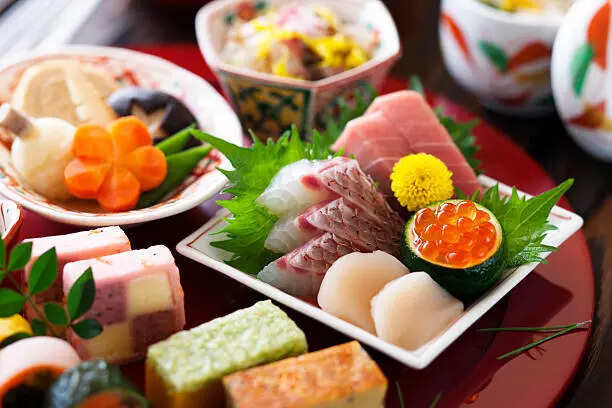ARTICLE AD BOX
Kaiseki, often called Japan’s most refined dining tradition, is more than just a meal. It began centuries ago as a humble companion to the tea ceremony – small, seasonal dishes designed to balance flavors and soothe the spirit.
Over time, it has grown into a multi-course journey that reflects nature, culture, and philosophy. Even today, in a world that’s constantly changing, kaiseki holds on to its essence.

At its core, kaiseki is about harmony. Every dish is shaped by the season and the landscape around it. Spring might bring tender bamboo shoots, early summer offers firefly squid, while autumn celebrates earthy matsutake mushrooms. The chef’s role isn’t to show off, but to translate what nature provides into an experience on the plate.
From the color of ingredients to the choice of ceramic bowls or lacquer trays, every detail connects the diner to the moment.

What makes kaiseki especially fascinating now is how it balances tradition with innovation. In Kyoto or Tokyo, chefs follow centuries-old rituals with precision, creating meals where every slice of sashimi and pour of broth feels almost ceremonial. But across the world, in places like New York, Paris, and London, younger chefs are reimagining the format – swapping in local seafood, experimenting with European herbs, or offering vegetarian versions – while still respecting its structure.
This ability to adapt is what keeps kaiseki alive and relevant.Beyond food, kaiseki also offers a lesson in mindfulness. In an age when dining is often rushed, it insists on slowing down. It asks you to notice the fragrance of fresh yuzu, the way textures shift from one course to the next, the feel of a handmade plate in your hand. More than sustenance, it’s a reminder that eating can be a form of art, memory, and connection to nature.

Of course, kaiseki still faces challenges. Its reputation for exclusivity – tucked behind sliding doors, reserved for formal occasions – makes it feel out of reach. But some chefs are breaking that mold by offering simpler seasonal menus or kaiseki-inspired bento boxes, making its spirit more accessible to everyday diners.In the end, the true soul of kaiseki lies in its philosophy: respect for the fleeting gifts of nature. Whether you’re seated in a centuries-old Kyoto ryotei or enjoying a modern version abroad, kaiseki is a quiet reminder that food, at its best, connects us to time, place, and the beauty of the present moment.



.png)
.png)
.png)
















 6 hours ago
2
6 hours ago
2








 English (US) ·
English (US) ·